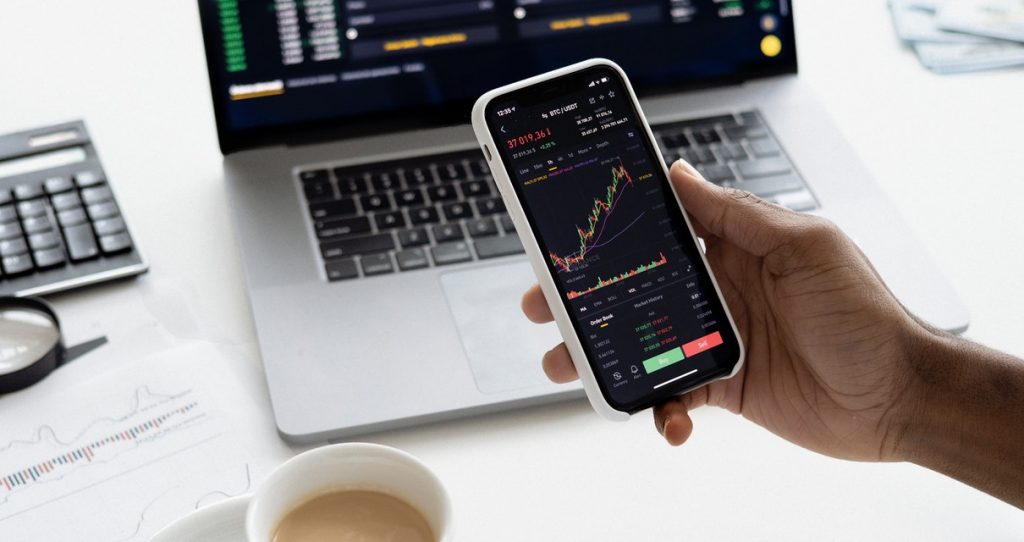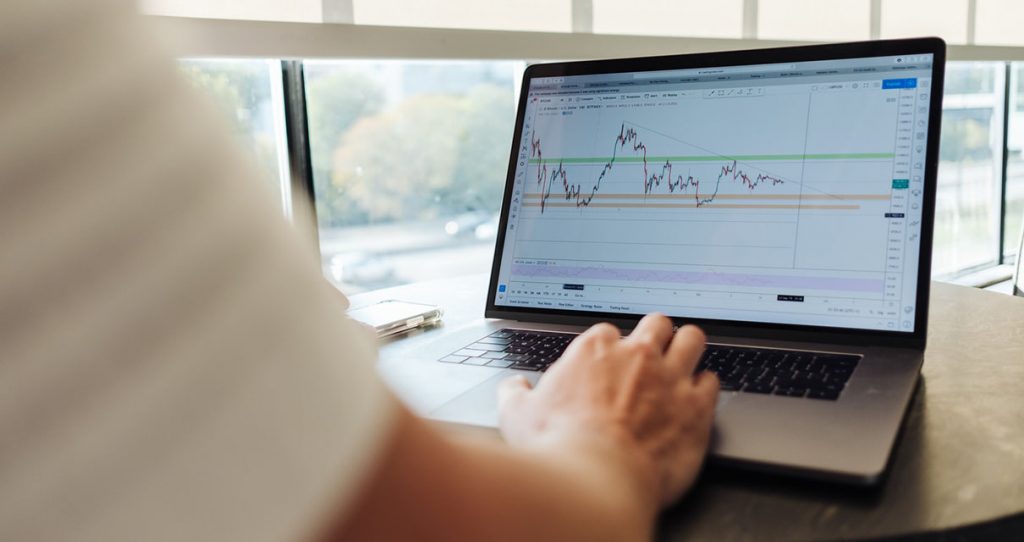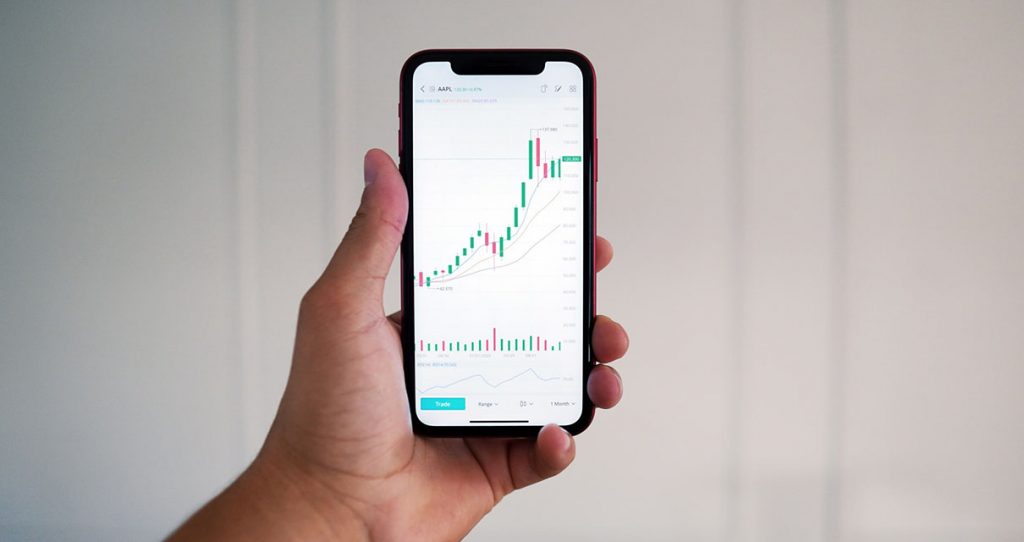Trade orders are fundamental tools for trading securities, as they help minimize losses and optimize your trading profitability. Knowing how and when to use them can help you make consistent profits. With the correct order at the right time, you can close an excellent deal, get out of a trade that doesn’t pan out the way you hoped, or ensure you don’t overpay or earn less than you could have.
The four basic types of orders are market, limit, stop, and stop-limit orders. Read on to learn more about them.
Market orders

Market orders are the only non-conditional orders, meaning their execution doesn’t depend on any criteria. They are tools for instant execution at or near the current bid (sell order) or ask (buy order) price.
They guarantee execution, but they don’t guarantee the price. Due to the market’s volatility, the last trade price may not match the execution price.
Use market orders only when you want to buy or sell immediately and don’t care much about the final price.
Limit orders

Limit orders are pending requests that let you buy or sell a security at a specific, predefined price or better. When placing one, you have to set a particular price limit that will trigger the execution. If the price doesn’t reach that limit, the order won’t get filled.
Limit orders are perfect when you’re not looking to go in and out of trades quickly and when you want to profit off of short-term price movements, especially in highly liquid markets.
Buy limit orders
When placing a buy limit order, you must set a price at or below the current market bid. For instance, if the price of a particular stock you want to buy is $15 per share, you could put a buy limit order at $10 per share. If the price reaches $10 or lower, your order will execute.
Sell limit orders
Sell limit orders require setting a price at or above the current market ask. So if you’re selling a security with a specific sell limit order, you ensure you’ll sell it at or above the set maximum price. That can help you capture a profitable opportunity before a possible price drop.
Take-profit orders
Take-profit orders, also referred to as profit target orders, are the best limit orders that any trader could use. Experienced traders use them all the time to maximize their profits.
They trigger when a security’s price reaches a specific, predetermined price that’s higher than the purchase price.
For instance, if you trade a particular stock at $15 per share, you could put a take-profit order to close the trade at $20 per share. If the price reaches that level, the order will trigger an automatic sale, thus preventing a loss in a downturn.
Take-profit orders are always connected to open positions of pending orders. When placing one, you must place a stop-loss order, too.
Stop orders

Stop orders, commonly known as stop-loss orders, are requests to buy or sell a security once it reaches a pre-specified stop price. Once that happens, a market order activates; that is, you buy or sell immediately at the current price.
As mentioned above, if you put a stop-loss order when trading a security, you have to place a take-profit order as well.
Buy-stop orders
Buy-stop orders are requests to buy a security at the stop price that’s higher than the current market bid.
For instance, if a stock’s price is $25 per share, you could put a buy-stop order at $28 to get out of a short trade if the price starts moving against you.
Sell-stop orders
These work the other way around, enabling you to sell a security if its price reaches the predefined stop price that’s lower than the current market ask.
Using the example above, you could place a sell-stop order at $21 per share, thus closing the trade to mitigate potential losses.
Stop-limit orders

As the name suggests, stop-limit orders combine the features of stop and limit orders. However, unlike stop orders, they don’t activate their market counterparts. Instead, when a security price reaches the stop price, a stop-limit order becomes a limit order that will execute at a specific price or better.
That said, you have to specify both the stop price and the limit price when placing a stop-limit order.
Buy stop-limit orders
With a buy stop-limit order, you can cap a security’s price to pay less than the current market price if it starts moving against you.
Let’s say you want to buy a stock priced at $30 per share. Of course, it would be in your interest to buy it at a lower price, but what if it starts going up? You could put a buy stop-limit order at, say, $32 per share (the stop price), with a cap of $32.10 (limit price). That way, if the price reaches $32 or above, you won’t pay more than $32.10.
Sell stop-limit orders
Sell stop-limit orders can help you sell a security if its price starts dropping. If it drops to your specified stop price or below, it will sell automatically, but not below your limit price.
For instance, if you set a stop price at $25, with a limit of $24.50, that means you’ll sell the traded security if it drops below $25, but you won’t sell it for less than $24.50.
Other order types

Apart from the main trade orders, you can use the following orders to minimize losses and lock in profits:
- Good-Til-Canceled (GTC) – You can keep this order active until you cancel it or it triggers a trade. It can stay open for up to 90 days.
- Day orders – These are limit orders that stay active until the end of the trading day, getting canceled if they don’t trigger a trade.
- Immediate-or-Cancel (IOC) – This is a buy or sell order that executes immediately, canceling any portion of the order that can’t be filled at that moment.
- One-Cancels-the-Other (OCO) is a pair of conditional orders where the first one to execute cancels the other one.
- One-Triggers-the-Other (OTO) – This is a conditional order that combines two sequential orders. Once the primary one executes, it triggers the secondary order.
- One-Triggers-a-One-Cancels-the-Other (OTOCO) – This includes one primary and two conditional secondary orders. Once the primary order executes, it triggers the OCO order.
- All-or-None (AON) – These orders must be executed entirely or not at all. They can remain active until executed or canceled.
- Fill-or-Kill (FOK) – Combining the features of AON and IOC orders, this order type requires an immediate execution of an entire trade. If it can’t get filled immediately, it gets canceled.
- Market-on-Close (MOC) – These are non-limit market orders that traders execute when the last available price of the trading day is available (or as close to that price as possible).
Conclusion
There’s no denying that trade orders are critical for trading success, so make them a vital part of your risk management strategy. They offer a surefire way to mitigate potential losses, capture winning opportunities, and optimize your trading profitability.





